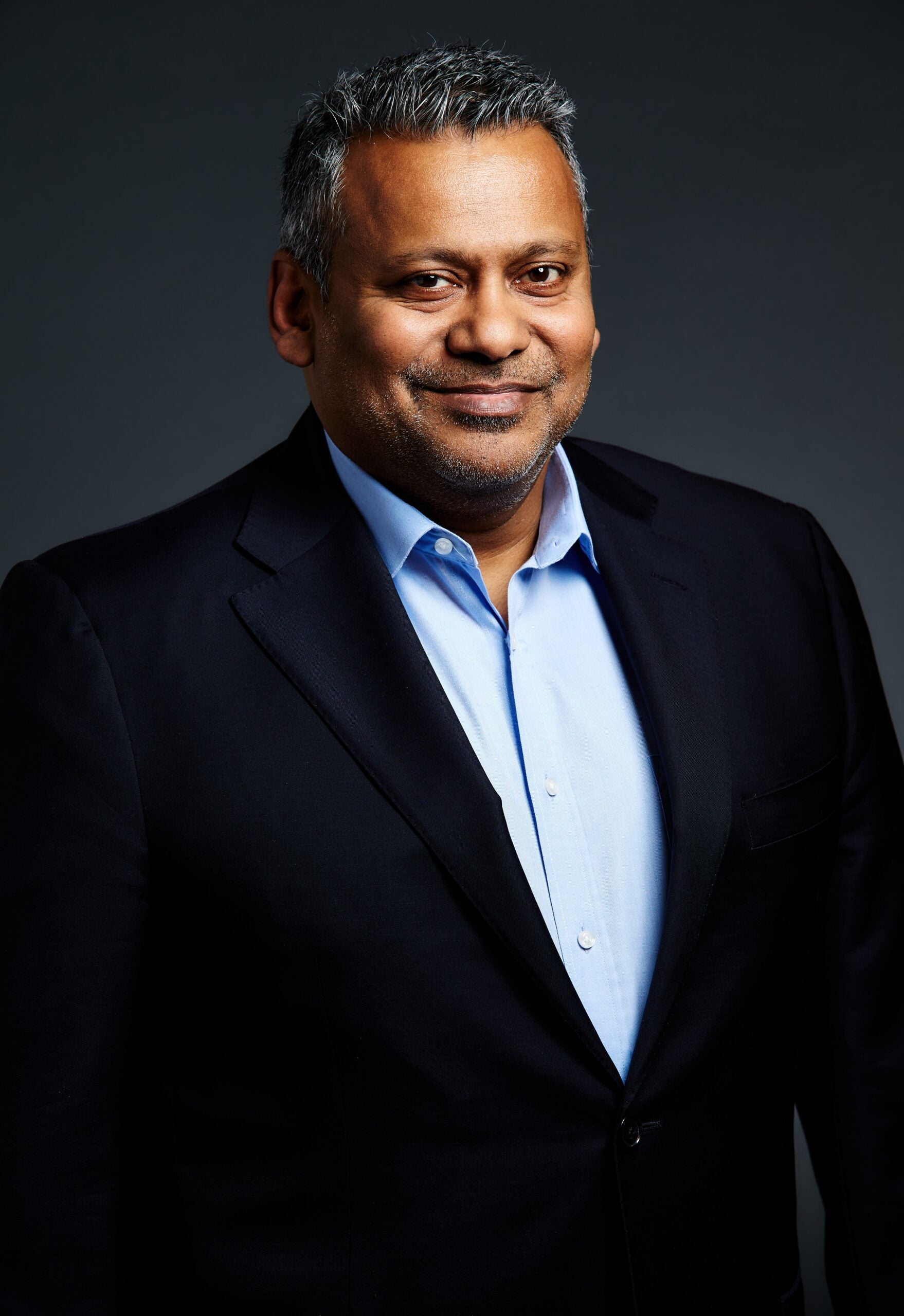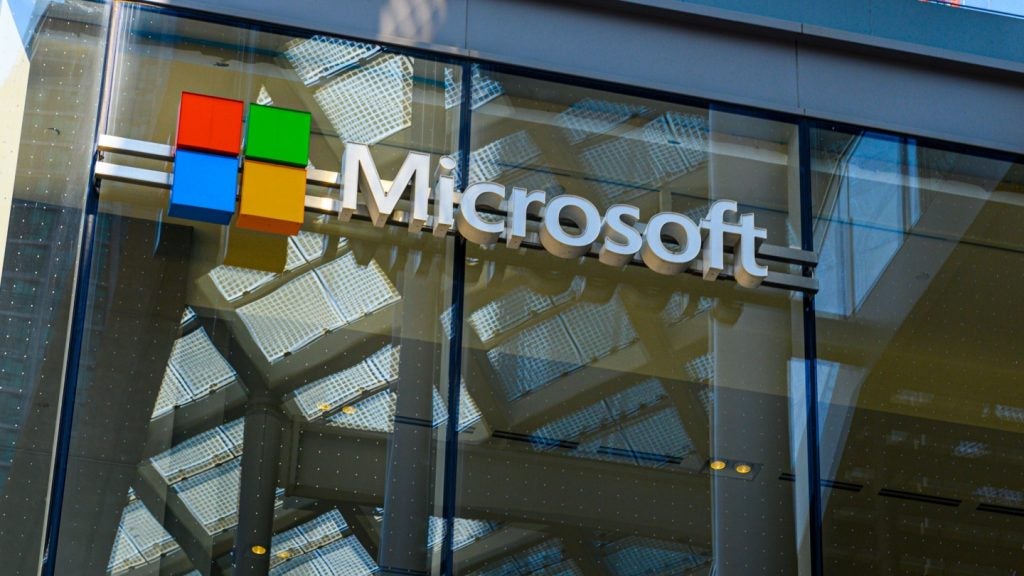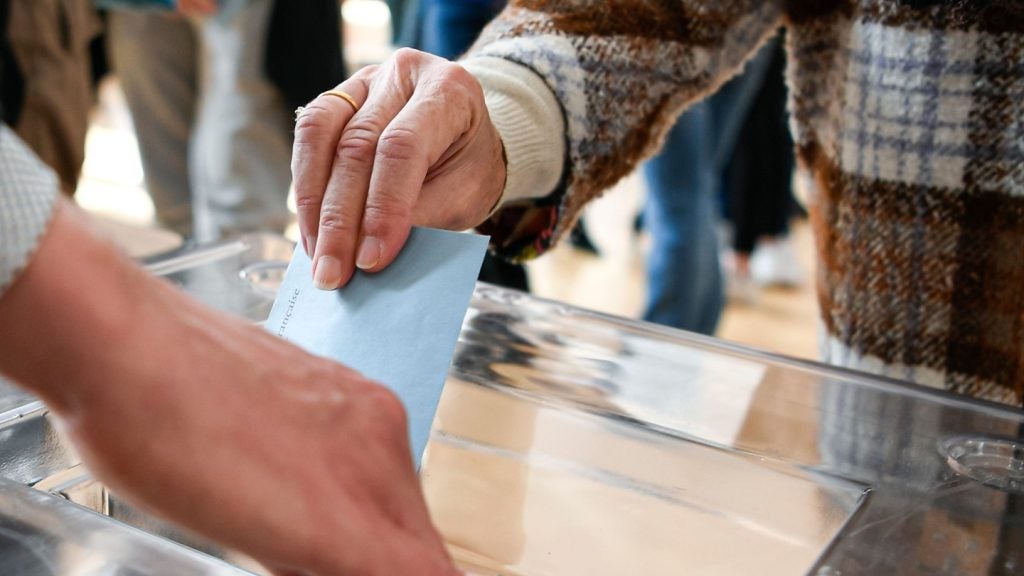
The CEO of Hitachi Vantara says companies should be more “practical” and data-driven when it comes to meeting ESG targets and reveals that staying on top of supply chain issues has become “almost a daily challenge” for the data storage firm.
Prior to taking the reins at Hitachi Vantara in July 2020, Gajen Kandiah was sceptical of companies using environmental, social and governance issues as a marketing ploy. Companies have been called out for so-called “greenwashing”, such as by using misleading advertising or relying heavily on carbon offsetting.
“I want to see it to be more practical and more tactile than just cutting a cheque and walking away,” Kandiah tells Verdict. “I think we need to be a lot more committed, and we need to show that commitment in a meaningful way.”
For Kandiah, that means planting trees instead of kicking the can down the road with carbon offsets. But crucially he wants to ensure the company provides tangible and measurable targets.
Japanese multinational Hitachi has a three-to-six-year plan that requires each subsidiary – which include Hitachi Rail, Hitachi Energy and others alongside Vantara – to provide “measurable and quantifiable environmental impact”.
“As a company, as a subsidiary within the Hitachi family, I need to provide very specific goals,” he says.
How well do you really know your competitors?
Access the most comprehensive Company Profiles on the market, powered by GlobalData. Save hours of research. Gain competitive edge.

Thank you!
Your download email will arrive shortly
Not ready to buy yet? Download a free sample
We are confident about the unique quality of our Company Profiles. However, we want you to make the most beneficial decision for your business, so we offer a free sample that you can download by submitting the below form
By GlobalDataThese include targets for travel reduction and reducing carbon footprints at Hitachi facilities. The latter can be done with Hitachi’s own IoT tech, with sensors in Hitachi offices measuring a baseline of energy use then providing a data-driven path to reduce consumption. Hitachi also committed to becoming carbon neutral by 2030.
As Hitachi Vantara makes industrial hardware alongside software, Kandiah says he must ensure products have “environmental resilience”, which means measuring and taking action to counter the environmental impact of every part it sells.
Hitachi Vantara sells enterprise storage solutions, along with IT consultation services, to sectors spanning from manufacturing to healthcare.
“Everything from the box to the motor, we need to provide the underlying environmental impact and then offset that,” Kandiah says.
Hitachi – the parent company of which Vantara is one of its many subsidiaries – was a principal partner at the recent COP26 climate change summit in Glasgow, UK. The outcome was mixed, with commitments on banning coal watered down by India and China at the eleventh hour. Language in the agreement was changed from “phase out” to “phase down” – the kind of vague language that is at odds with Kandiah’s approach.
Asked for his views on the COP26 deal, Kandiah says: “Protecting the rainforests and putting coal under pressure were important outcomes of COP26, but the conference clearly didn’t achieve all of its goals, and that work must continue with urgency next year.”
He adds that companies, including Hitachi, can “still do the right things for the planet, right now” and points to Hitachi signing up for Business Ambition for 1.5°C.
Meeting “social good” targets
The other part of the ESG equation is social impact, which includes a commitment to maintaining labour standards and human rights in the supply chain. Kandiah concedes that social good is harder to quantify than environmental, but for Vantara it means reinvested profits and technology into “driving social and environmental improvements”.
Kandiah gives the example of Vantara developing its Lumada edge intelligence technology for commercial uses – such as predictive maintenance at Disney theme parks – and then providing the underlying technology stack pro bono to Rainforest Connection, a non-profit that uses IoT sensors and AI to detect illegal logging in Sumatra, Indonesia.
“I think the social innovation piece is somewhat disconnected in terms of reporting from the safety, security, resilience and environment piece. I think there is an expectation that irrespective that whatever we may be doing for social good, or powering good, that the more quantifiable elements have to be defined and delivered upon.”
Asked whether governments should create legal requirements for companies to meet ESG targets, Kandiah says he’s more in favour of a government-issued “framework”.
However, if that doesn’t have an impact at an industry level – particularly on environmental issues – then regulation should be considered, Kandiah says.
“There’s an argument to say that a lack of regulation has led us to where we are. It’s a tough one.”
A global pandemic and supply chain woes
Kandiah became CEO of Hitachi Vantara – his first chief executive role – in the midst of the Covid-19 pandemic.
During his first few weeks, he undertook a frenetic Zoom meet and greet schedule with staff, including an “ambitious” 100 virtual introductions in one week, broken into “15-to-20-minute chunks”.
“I don’t think I would repeat 100 people in a week, maybe spread it out a little more,” he laughs. “But at that point in time it felt like the right thing to do.”
While he sees the value of remote meetings he believes – like many CEOs – that the future of work is a hybrid model.
“Now that I’ve had a chance to meet people in person, I [realise] that I completely undervalued the impact of in-person,” he says. “It’s not that people need to show up to the office every day, it’s more the energy, the passion, the learnings that occur during the hallway conversations – I completely missed that.”
In a previous role, Kandiah flew from Boston to Bangalore for a two-hour meeting because it was deemed “absolutely essential” to be there in person.
“I think that whole world is gone,” he says, adding that the pandemic has made it far more acceptable for chief executives to conduct some of the more business-critical meetings via video call.
In addition to leading 11,000 employees through a once in a generation pandemic, Kandiah faced the immediate challenge of navigating global supply chain disruptions that have plagued sectors ranging from automotive to consumer tech.
Semiconductors have been in particularly high demand, causing all major automakers to pause production at some point over the past 18 months. However, Kandiah says Vantara’s team in Japan has “proactively” secured the chips the company requires, shielding it from the worst of the shortage.
But Vantara has struggled with supply chain problems in other areas. Shipping products to customers on time is “almost a daily challenge” for Vantara’s supply chain team, with stock getting “stuck” in ports.
“It’s not the getting it packaged and out the door, it’s everything from the point of pickup to the point of arrival, and all of the steps in-between, are that much slower,” he explains.
Kandiah pinpoints the problem to a slowdown in custom clearances and a lack of staff at ports.
“There’s so much product sitting in our ports that getting them through requires someone with a magic wand showing up on our side working with our partners,” he says. “We have to almost pre-plan every shipment, including understanding the customers’ specific requirements to get that shipment on the ground and in their data centre.”
Kandiah had expected there to be a relief in supply chain issues as more people became vaccinated and economies opened up. But from his experience, that isn’t yet the case.
“Our ability to get our product to our customers and deliver on our commitments has been so far so good. But I don’t think we’re out of the woods. If I project forward, I think that’s going to be an issue to watch – for all of us.”
Kandiah says Vantara’s business continuity plan means it “currently has sufficient inventory in our key geographies to meet client orders”.
Hitachi Vantara CEO on acquisitions and 2022 strategy
Under Kandiah’s leadership, Hitachi Vantara has made several acquisitions.
In June, it acquired data governance company Io-Tahoe, a subsidiary of UK energy company Centrica.
In July, Hitachi completed the purchase of GlobalLogic, a digital engineering, experience design and data services company, an acquisition Kandiah oversaw.
For now, Kandiah is focused on embedding and integrating his acquisitions into Vantara, both in terms of products and customer need.
It’s an important step for a Vantara, which was itself formed out of a merger between Hitachi Data Systems, Hitachi Insight Group IoT and Pentaho.
“We need to formulate them in a way that makes sense to our customers,” he says.
“One of the things I’ve learned along the way is to no not make [being CEO] an entirely acquisitive journey,” he adds.
But he adds Vantara “is not out of the acquisition market”, adding that it will “always be open to something strategic that pops up or opportunistic.”
“But I think first we want to settle this down and then start to look at other areas or gaps that we need to close.”
Kandiah’s strategy for 2022 will see the company be “more specific” about what’s available under its portfolio.
He says Vantara is aiming to meet a demand from customers for “more vertically integrated capabilities”, from storage to the application layer.
“If it’s storage, then what sits on top of the storage, i.e. data,” Kandiah explains. “What sits on top of the data – some sort of an application platform – and then what’s the app that sits on top of that. And I think what we’re putting together is an ability to be able to deliver from the design all the way through to the storage, and then partner around compute and network.”
Right now the focus is on “assembling the parts” of this process and “working through the kinks”.
Kandiah also wants to pivot Vantara to a managed services model and not just storage as a service.
This will involve a “high impact solution focus”, along with getting a consumption model up and running across the firm’s solutions.
“I’ve always watched from the outside because industrial companies are hard to get into if you’re a service provider,” says Kandiah. “Here I am sitting in the midst of energy, rail, mobility, automotive, these phenomenal businesses, and having the ability to drive transformation from the inside out is a really exciting place to be.”







